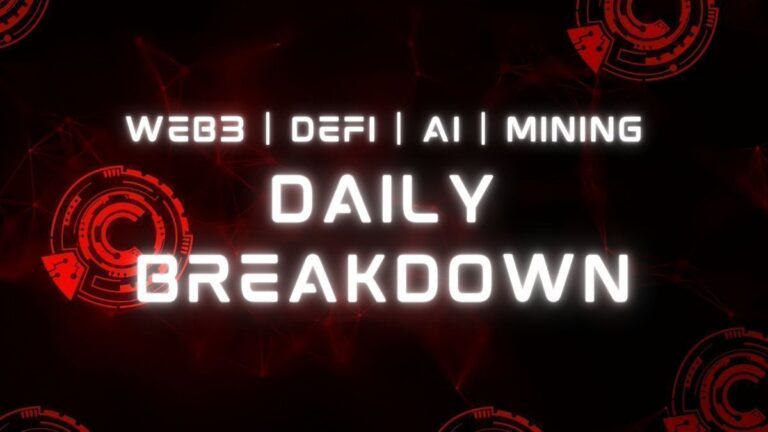
![]() TL;DR: A research paper by Ph.D. student Mustafa Al-Bassam has evolved into the $345M blockchain project, Celestia, which aims to revolutionize blockchain architecture by separating its core functions. The project recently launched with a significant airdrop of its TIA tokens, drawing immense attention from the crypto community.
TL;DR: A research paper by Ph.D. student Mustafa Al-Bassam has evolved into the $345M blockchain project, Celestia, which aims to revolutionize blockchain architecture by separating its core functions. The project recently launched with a significant airdrop of its TIA tokens, drawing immense attention from the crypto community.
How a Research Paper Launched Celestia Into a $345M Blockchain
In 2019, a seemingly innocuous paper titled “LazyLedger” was published by Mustafa Al-Bassam, then a Ph.D. student at University College London. Far from a light read, this paper delved deep into a groundbreaking concept: the separation of blockchain functions into distinct “application layers.” The primary advantage? Drastically reducing the resources required to operate the main blockchain.
Fast forward to today, and Al-Bassam stands at the helm of Celestia Labs, the driving force behind the Celestia project. This new “data availability” network is being hailed as the dawn of a “modular era” in blockchain design.
Celestia’s Role in the Blockchain Ecosystem
The overarching vision for Celestia is to unburden the Ethereum blockchain from the massive data storage and transmission demands posed by the burgeoning “layer-2” networks, or “rollups.” These rollups allow for more cost-effective and swift transactions.
Christine Kim, a notable figure in the crypto realm, suggests that Celestia could become the foundational layer for a scalable network of rollups, achieving this modular dream without compromising on decentralization or security.
However, the crypto world’s spotlight was undeniably fixated on the recent airdrop of 60 million TIA tokens, Celestia’s native currency. This event saw a staggering 191,391 claims, with future plans to allocate another 140 million tokens for upcoming endeavors.
The Significance of Data Availability
While the buzz around Celestia’s token airdrop is undeniable, it’s essential not to lose sight of the project’s core mission. The term “data availability” might sound esoteric, but its implications are profound. In layman’s terms, it facilitates the storage, retrieval, and verification of transaction information by network nodes.
Celestia’s primary ambition is to address the scalability and stability challenges that have long plagued giants like Ethereum and Solana. This is achieved by providing a platform for the vast amounts of data generated by “layer 2” networks operating atop primary “layer 1” blockchains.
The Mechanics of Celestia
Delving into Celestia’s workings, the TIA tokens play a pivotal role in how developers construct on this pioneering modular blockchain network. For utilizing Celestia’s data availability features, developers initiate a “PayForBlobs” transaction on the network, priced in TIA.
The essence of modular blockchains lies in their specialization. Instead of a one-size-fits-all approach, these blockchains are tailored to excel in specific functions. This specialization ensures that they don’t have to sacrifice decentralization or security for scalability.
Celestia’s Unique Proposition
When asked about what differentiates Celestia from other blockchains, the answer revolves around “data availability sampling.” This technique allows users to verify vast blocks of data through a process called data availability sampling. The hallmark of Celestia, data availability sampling (DAS), offers a method to validate all accessible data on a blockchain.
The primary beneficiaries of this feature are those operating light nodes, which can function on modest computers without the need for extensive computational power or storage. These nodes can validate data availability without downloading an entire block’s data. As these nodes complete multiple rounds of block data sampling, their confidence in the data’s availability grows.
If Al-Bassam’s vision materializes, everyday crypto users might seamlessly interact with Celestia, possibly without even realizing it. Fully grasping its intricacies? That remains a challenge for another day.
In the Spirit of Decentralization
As we stand on the precipice of a new era in blockchain technology, it’s crucial to remember the core principles that brought us here: autonomy, freedom, and the power of decentralized systems. Let’s champion innovations like Celestia, not just for their technological prowess but for their potential to uphold these values in an increasingly interconnected world.
Thank you for reading “From Academic Paper to Blockchain Revolution“.
- Subscribe to our newsletter: ConsensusProtocol.org
- Follow us on Twitter: @ConsensusPro
Sources:
- How a Ph.D. Student’s Research Paper Turned Celestia Into $345M Blockchain Project Overnight
- LazyLedger paper by Mustafa Al-Bassam
- Celestia Labs official documentation
- Comments and reports by Christine Kim, vice president of research at Galaxy
- CoinMarketCap data on TIA tokens
- Insights from Celestia spokesperson Ekram Ahmed and other industry experts.




